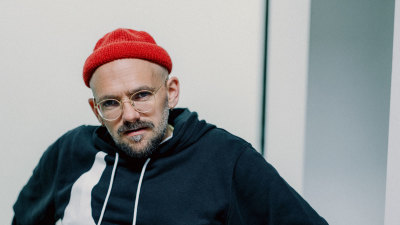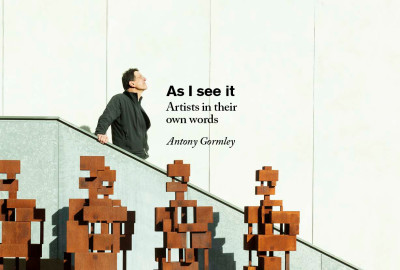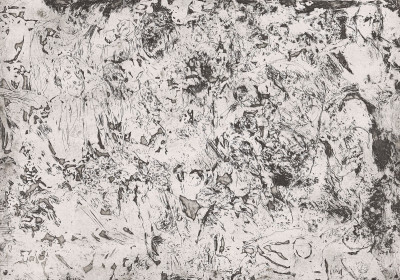10 minutes with… Timothy Hyman RA
10 minutes with… Timothy Hyman RA
By Harriet Baker
Published 2 June 2015
As he prepares to exhibit new work, we chat to Timothy Hyman RA about his love of Sienese frescoes and learning to paint with gouache as a child.
-
Timothy Hyman RA is a portraitist, but is probably best known for his narrative renditions of London. Drawing inspiration from the likes of painters Max Beckmann and Pierre Bonnard, he explores his personal relationship, both real and mythological, with the city where he lives and works. He employs vivid colours, shifting scale and perspectives to create visionary works.
In 2011, Hyman took up an artist’s residency at Maggie’s Centre in south west London, a support centre for people with cancer. For one day each week, Hyman would create poignant and characterful drawings of the centre’s residents. These drawings form the Academicians in Focus: Timothy Hyman RA, and will be on show in the Belle Shenkman Room of the Keeper’s House until 22 October.
What are you working on at the moment?
As always, I’m working in two studios, one in Angel and one in Haggerston. I’ve found that I can’t work consecutively for very long on just on one picture and so at any one time I might be working on up to 20 pictures across the two studios, some of them going back five years or more.
My Haggerston studio has slightly bigger walls and so the larger pictures tend to be there. But I’m also a bit split between real-life painting, based on drawing and observation, and another kind of painting, which has more to do with the future. It’s a kind of emblematic imagery. For example, I’m currently working on a big picture about Saturn and melancholy.
My residency at Maggie’s, the focus of my exhibition at the RA, began in December 2011 and I drew there one day each week throughout 2012, as well as drawing at some of the Centres in Scotland (designed by Rem Koolhaas, Zaha Hadid RA and Frank Gehry Hon RA). But the paintings have a longer gestation; a few of them will appear in the exhibition.
What is your earliest memory of art?
As a child I commiserated with my brothers, because they didn’t know what they wanted to be, but I did. Even before I could read, I tremendously enjoyed working with gouache on coloured paper. I had an imaginary figure I would paint: a drunken sailor in navy uniform. He was a stereotype as I always dealt in characters. My first school report read “much too wedded to the grotesque".
I was a child artist and I think I really peaked at the age of 11, as I still have an affinity with those paintings.
-

Timothy Hyman RA in his Islington studio
Photo: Harriet Baker © Royal Academy of Arts
-
Which work of art do you wish you’d created?
Ambrogio Loronzetti’s The Well-Governed City which is in Siena. I saw it when I was 17. It’s a wonderful 46 foot-long wall fresco with the whole of life in it: it features both the city and the countryside, is both a microcosm and a map, and it has a cosmic and a moral dimension. It’s everything I would wish a painting to be.
How do you know when a piece of work is finished?
The best answer to that is by Howard Hodgkin who said, “When the subject comes back.” I find that during the process of painting a picture, the formal things begin to become totally dominant, and you stop seeing or feeling the initial reason for the painting. But then there is a moment when the painting starts to come back into focus as a whole and it starts to make sense again. Something about it that was lost comes back.
Where were you when you found out that you had been elected as an Academician?
I was at home and found out in the morning, although I had been tipped about it the night before. Somebody broke ranks, though I’m not going to tell you who!
-

Timothy Hyman RA's studio
Photo: Harriet Baker © Royal Academy of Arts
-
What does the RA mean to you?
The truth is, I was thrilled to be elected. As an artist, you don’t really get any clear signs of status or recognition in the art world. And although I think it’s an illusion – I don’t think the Royal Academy has any real status to tell people whether they’re good – it is like receiving a long-service medal.
At the RA there are wonderful curated exhibitions, which became more wonderful under Norman Rosenthal. He had tremendous flair and the institution began to be the main place for curated exhibitions in London.
I love the Library. That is one of the most unexpected things about the RA. The other Academicians don’t use it very much, which is a pity because it’s linked to the London Library so you can get anything you want, including novels. I use the library at UCL but in many ways this is much better and in a much nicer setting.
What would you do if you were President of the RA for the day?
The redevelopment of Burlington Gardens, with a new lecture theatre and other facilities, could make the RA a venue for debate and discussion, including greater rapport between painters and architects. It would be rather like the ICA 40 years ago.
Most of all, if I was President, I would try to reclaim the Royal Academy for bohemia rather than for corporate patronage.
What advice do you have for aspiring artists?
There’s a drawing by Michaelangelo with a tiny inscription that says: “Draw, Antonio, draw, Antonio, draw, and don’t waste time.”
Timothy Hyman RA’s drawings of Maggie’s Centres, Academicians in Focus: Timothy Hyman RA will be on display in the RA until 22 October.





